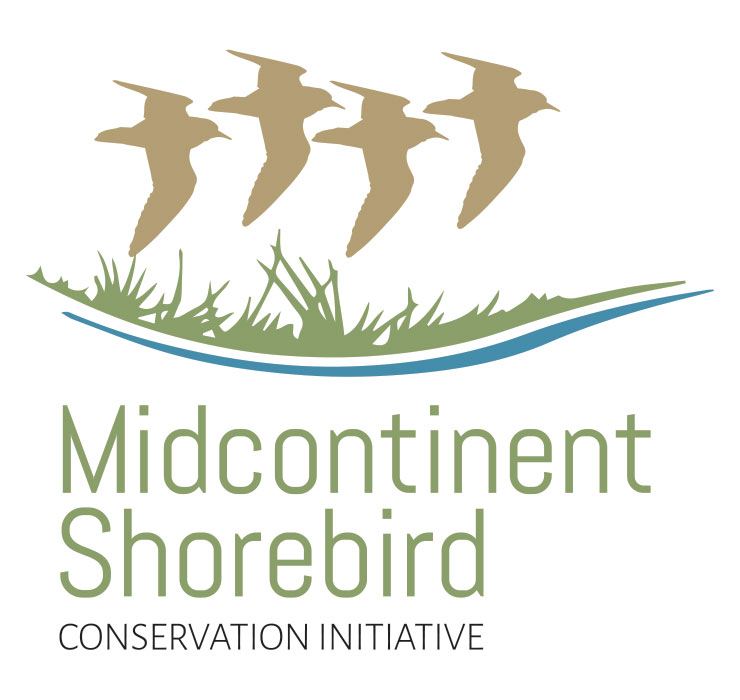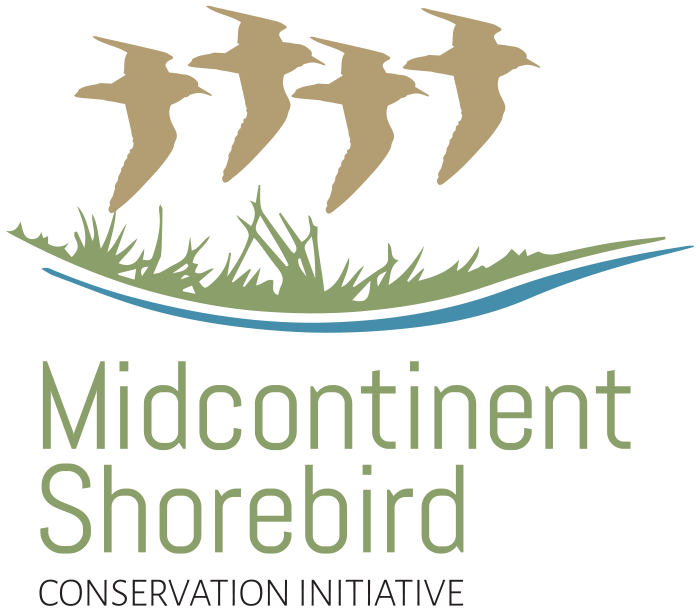Implementation
The MSCI Framework is designed to be implemented across multiple scales — Flyway, planning unit, national, and local — to ensure effective conservation of shorebirds in the Midcontinent Americas Flyway.

Implementation
The MSCI Framework is designed to be implemented across multiple scales — Flyway, planning unit, national, and local — to ensure effective conservation of shorebirds in the Midcontinent Americas Flyway.
American Golden Plover · Shiloh Schulte

Surveying for Magellanic Plover (Pluvianellus socialis). Photo: Mauro Ricci – Asociacion Ambiente Sur.
At the Flyway scale a Steering Committee and Coordinator will guide and track progress, while strategic working groups will lead actions in collaboration with Atlantic and Pacific initiatives. Planning units (large ecoregions) provide a basis for regional strategies, though much implementation occurs at the national and local levels, where tailored actions address specific threats and opportunities. National Shorebird Coordinators and aligned conservation plans ensure consistency and impact across borders.
Local projects form the backbone of measurable outcomes, and are encouraged to align with broader strategies. Success depends on collaboration among a diverse network of stakeholders, including NGOs, Indigenous communities, government agencies, landowners, and industry partners.
Strategies
The nine strategies are the core of the Midcontinent Shorebird Conservation Initiative (MSCI) approach. Each strategy addresses critical threats to shorebirds while also supporting broader conservation, policy, and human well-being goals.
This strategy focuses on building institutional and policy support for shorebird conservation at all levels of government. Key actions include integrating shorebirds into national and sub-national biodiversity and land-use policies; enhancing regulatory frameworks and environmental impact assessments; supporting government capacity to manage protected areas and deliver conservation outcomes; and leveraging international agreements and conservation commitments.
Read more about this strategy (p.38)
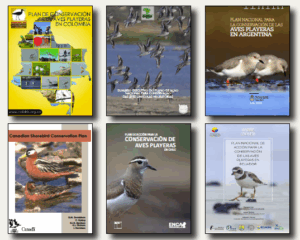
Example:
National Shorebird Conservation Plans provide a science-based, coordinated strategy to protect shorebirds and their habitats while ensuring conservation efforts are effective, well-funded, and aligned with national policies. They prioritize actions, guide resource allocation, foster collaboration among governments, NGOs, and communities, and enable Flyway-scale conservation. Beyond ecological benefits, these plans also enhance human well-being by supporting clean water, healthy soils, flood regulation, and carbon storage — all essential for climate resilience. Conserving grasslands, wetlands, and river basins sustains local economies through agriculture, fisheries, and ecotourism while also protecting biodiversity.
This strategy emphasizes collaboration among stakeholders to align conservation efforts across sectors and regions. Some key actions to implement the strategy include building and supporting alliances among NGOs, Indigenous communities, landowners, agencies, and researchers; encouraging knowledge exchange and coordinated conservation planning; and promoting inclusive decision-making and co-management approaches at local, national, and Flyway scales. Read more about this strategy (p.42)
Example:
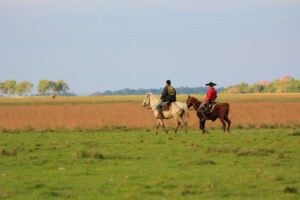
The Grasslands Alliance is an initiative of BirdLife International and BirdLife partners in Brazil, Argentina, Uruguay, and Paraguay, which seeks to conserve Southern Cone grasslands. The Alliance brings together producers, researchers, governments, and entrepreneurs to work towards the sustainable use of grasslands, deriving value from their ecological, cultural, and economic significance. Some of the Alliance’s successes include more than 1 million hectares under sustainable management, more than 1.5 tons of carbon per hectare stored, and over 700 producers as members of the Alliance.
This strategy encourages voluntary conservation through economic and social incentives, which is possible by implementing payment for ecosystem services programs, promoting certification systems that reward bird-friendly practices (e.g., in agriculture or ranching), providing technical and financial support to landowners for habitat protection and restoration, and supporting market-based solutions and conservation stewardship models. Read more about this strategy (p.45)
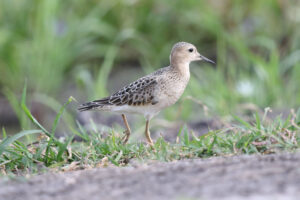
Example: The “Shorebirds of Louisiana Wetlands Initiative” is a U.S. federal government initiative incentivizing the enhancement of wetland habitat for shorebirds in the state. As part of the larger “Working Lands for Wildlife” state-based partnership, the Natural Resource Conservation Service (NRCS), together with Manomet Conservation Sciences and Ducks Unlimited, provide technical and financial incentives to producers to manage water on their fields, thus providing fall habitat for southbound migrants. Manomet is working with NRCS to expand the program to include practices that would also create short grassland habitats for Buff-breasted Sandpiper and other upland shorebirds.
This strategy’s goals are to secure and improve critical shorebird habitats to ensure their long-term viability. It includes acquiring or designating land for conservation through purchases or easements, restoring and enhancing habitat quality through hydrological, vegetative, or structural interventions, identifying and prioritizing key sites for action based on species needs and climate resilience, and ensuring long-term management of restored or protected habitats. Read more about this strategy (p.48)
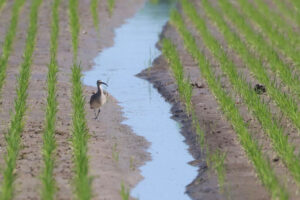
Example: The Coastal Bend Bays & Estuaries Program launched their Migratory Shorebird Habitat Initiative in 2023 to monitor shorebird use of agricultural lands and moist-soil management units along the Texas Coast, where some landowners use financial incentives to provide waterfowl habitat on their farms and ranches. The NGO is working with rice growers, ranchers, and others to monitor which practices also benefit shorebirds. They will then seek opportunities to work with federal agencies and others to expand existing or develop new shorebird- specific incentives, with the objective of increasing the quality and quantity of shorebird habitats in the Gulf Coast Prairies and Marshes region.
This strategy promotes land management techniques that maintain people’s livelihood in working landscapes while benefiting shorebirds. Key actions include implementing rotational grazing, delayed harvesting, and seasonal flooding; managing fire regimes to support open habitats; encouraging water-level manipulation in agricultural and wetland systems; and sharing traditional ecological knowledge and scientific innovations across regions. Read more about this strategy (p.51)
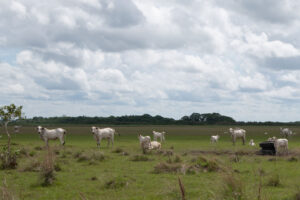
Example: In the Barba Azul Nature Reserve, a WHSRN site, Asociación Armonía has designed a sustainable cattle ranching model that supports the long-term financial and ecological sustainability of the Reserve. They are developing guidelines for stocking rates and rotation practices that can create the lawns of short grass needed by Buff-breasted Sandpiper and other grassland shorebirds without sacrificing productivity. Barba Azul is also used as a demonstration site to teach other regional producers how they can create habitat for vulnerable species such as the Blue-throated Macaw, as well as many shorebirds, without impacting their operations. This sustainable and eco-friendly model is now being expanded across the Bolivian savanna through the Beni Eco-friendly Grassland Alliance, with the goal of producing shorebird-friendly beef.
This strategy supports science-based conservation by addressing key research priorities and data deficiencies. Some key actions to implement include investigating impacts of threats such as climate change, contamination, and hydrological alteration; mapping migratory pathways and habitat use throughout the annual cycle; identifying gaps in monitoring and ecological understanding, particularly in under-studied regions; and promoting data sharing and collaborative research. Read more about this strategy (p.54)
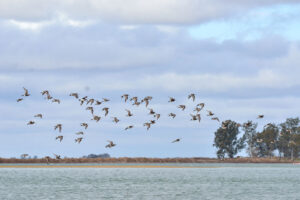
Example: Recent research and monitoring efforts conducted by the Instituto de Investigaciones Marinas y Costeras (CONICET-Universidad Nacional de Mar Del Plata), Universidad Austral de Chile, and the University of Massachusetts Amherst have identified previously unknown key non-breeding areas for Hudsonian Godwit and Lesser Yellowlegs in the interior Pampas of Argentina (Mart.nez-Curci et al., in review). Current research efforts are focused on understanding the impacts of incompatible water management, habitat conversion, and unsustainable agricultural practices by integrating habitat modeling, movement ecology studies, and contaminant impact assessments.
This strategy prepares shorebird habitats and conservation strategies to cope with climate change, which is achieve through conducting vulnerability assessments of species and habitats; integrating climate projections into site design and restoration planning; enhancing the resilience of ecosystems through habitat buffering and connectivity; and addressing climate-related risks such as drought, flooding, and sea-level rise. Read more about this strategy (p.57)
Example:
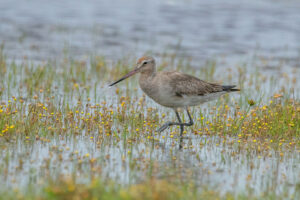
Assessment of future shorebird habitat in Brazil under climate change: Research predicts significant habitat losses for 25 shorebird species in Brazil by 2050 and 2070, with areas along the southeastern coast, the Pantanal, and the Amazon River facing major declines (Damasceno 2021). While the study didn’t focus on conservation actions, it represents a crucial step in understanding climate change impacts on shorebirds, informing future adaptation strategies and habitat management plans in Brazil. Similar analyses across the Midcontinent Americas Flyway could be invaluable for developing climate adaptation strategies and prioritizing conservation actions.
This strategy involves engaging community members, land managers, and key decision-makers in shorebird conservation. Key actions include developing outreach materials and public education campaigns; providing technical training to landowners, practitioners, and local organizations; promoting youth engagement, citizen science, and cultural connections to shorebirds; and supporting leadership development in local and Indigenous communities. Read more about this strategy (p.60)

Example:
Experiencia Ambientalia, led by Fundación Lideres de Ansenuza and the Executive Office of WHSRN, fosters sustainable change in the Mar Chiquita lagoon by empowering local youth leaders to undertake impactful projects and become stewards of WHSRN sites. Over three years, the program has engaged 500 young people from 22 villages in Córdoba, Argentina, in conservation leadership, resulting in 40 projects. Additional capacity building includes 50 school teachers who have participated in the program annually. The initiative has expanded virtually to 15 other WHSRN sites.
This strategy ensures long-term coordination and positive impact of the MSCI through effective leadership and resource mobilization. Some key actions to implement the strategy include supporting Flyway-scale governance and strategic planning, facilitating cross-regional collaboration and communication, developing long-term funding mechanisms and partnerships, and monitoring progress and adapting implementation based on outcomes. Read more about this strategy (p.64)
To support strategic implementation of the MSCI Framework, the following table illustrates how each of the seven major threats to shorebirds is addressed by the key conservation strategies. This alignment highlights the multi-faceted nature of each strategy and demonstrates how they contribute—either directly or indirectly—to mitigating critical threats across the Midcontinent Flyway.
